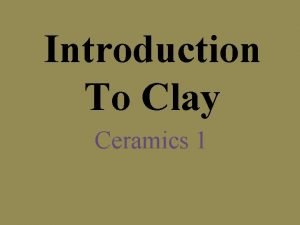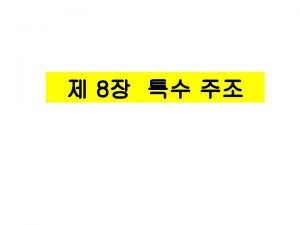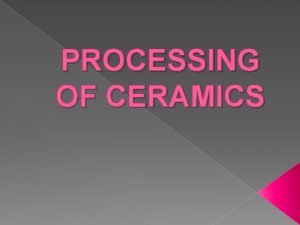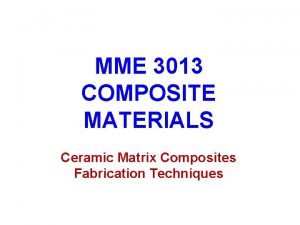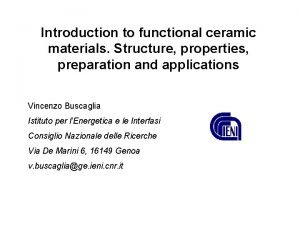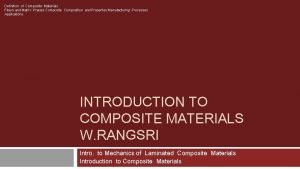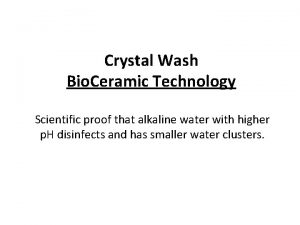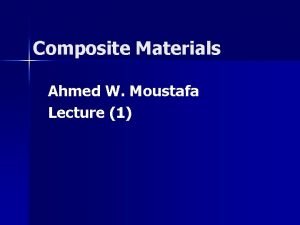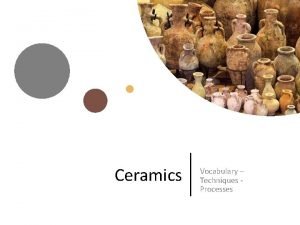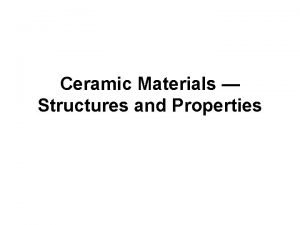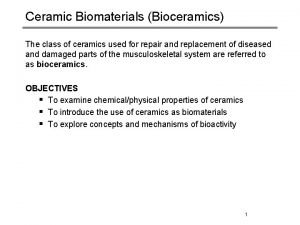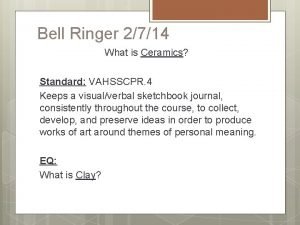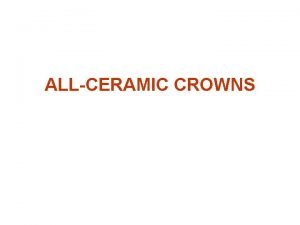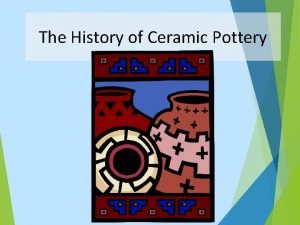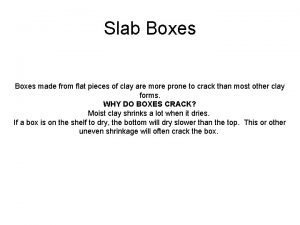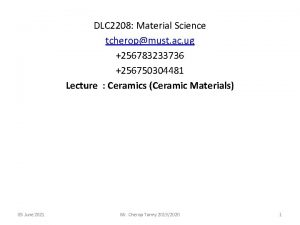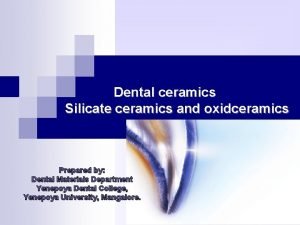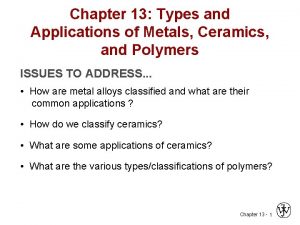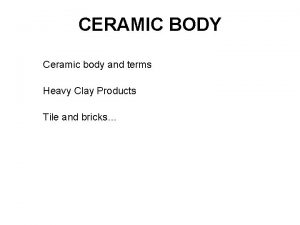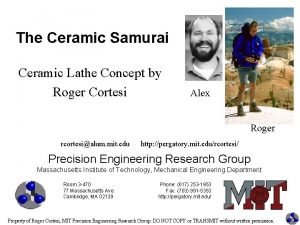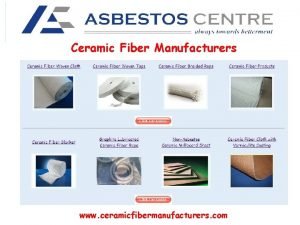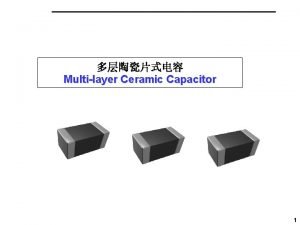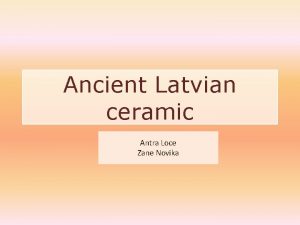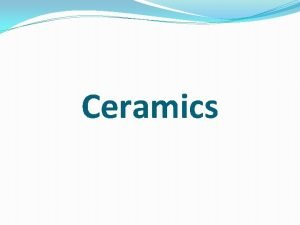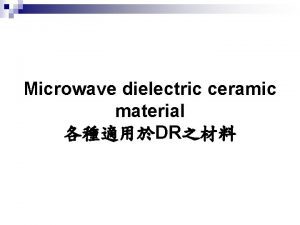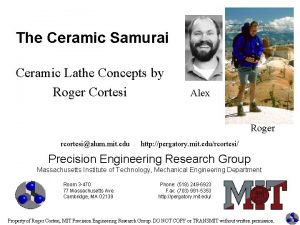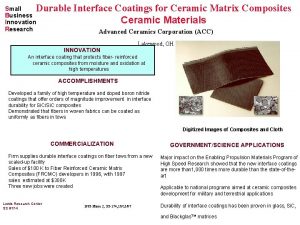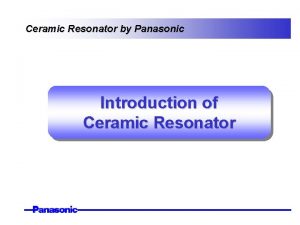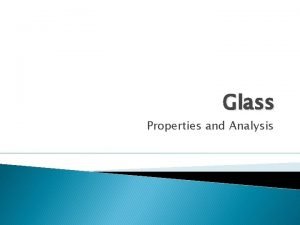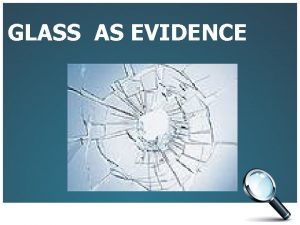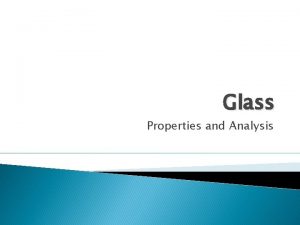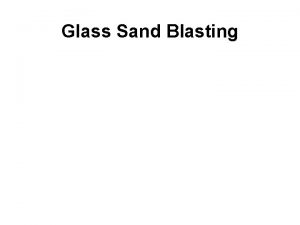Study of the New Glass and Glass Ceramic



















- Slides: 19

Study of the New Glass and Glass Ceramic Stoichiometric and Gd 3+-loaded Ba. O*2 Si. O 2: Ce (DSB: Ce) Scintillation Material for Future Calorimetry R. W. Novotnya, K. -T. Brinkmana, A. Borisevichb, V. Dormeneva, M. Korjikb, D. Kozlovb, P. Orsichb, H. -G. Zaunicka, and S. Zimmermanna a. Justus-Liebig-Universität b. Institute Giessen , II. Physikalisches Institut, Giessen, Germany for Nuclear Problems, Bobruiskaya 11, 220030, Minsk, Belarus and for the Crystal Clear Collaboration • motivation: severe radiation damage due to hadrons • properties of the new material DSB: Ce • characterization of bulk and fiber material • radiation hardness • heavy loading with Gd 3+ • summary and outlook

motivation: calorimetry limited by severe hadronic radiation damage change of optical transmission due to 150 Me. V protons 1. 8 x 1013 p/cm 2 @KVI Francesca Nessi-Tedaldi (ETH, Zürich, Switzerland) 24 Ge. V protons 3. 6· 1013 p/cm 2 creation of macro defects highly ionizing fission products ion displacements lower Z material required sampling calorimetry cheap for mass production 2

properties T / o. C technology: glass production combined with successive thermal annealing (800 – 900 o. C) 1µm weight % Si. O 2 phase diagram of the Ba. O*Si. O 2 system • nano-sized particles of Ba 2 Si. O 5 improve scintillation! • Ba-Si system allows to incorporate trivalent ions: Lu, Gd, Yb SEM image of recrystallized Ba. O*2 Si. O 2 at 950 o. C 3

Investigation of the creation of scintillation centers in collaboration with D. Rinaldi, SIMAU, Ancona Characterization of doped and un-doped DSB at different annealing temperatures: • characterization of crystallization • measurement of light yield and radiation hardness XRD: samples containing Ce show earlier crystallization HRSEM: 1. 6% Ce 1. 93% Ce 4

Irradiation and recovery studies: Quality of samples: @RT, integration 4µs d. LY: /d. T: +0. 05%/o. C LY @ RT: 110 phe/Me. V (4µs) Irradiation with 60 Co, 2 Gy/min Spontaneous and stimulated recovery 5

irradiation and recovery studies: with 150 Me. V protons flux ≤ 2 x 1011 p/s cm 2 integral fluence = 5 x 1013 p/cm 2 Ba. O x 2 Si. O 2 (mother glass) Ba. O x 2 Si. O 2 : Ce (without thermal treatment) DSB: Ce (after thermal treatment) 6

DSB: Ce fibers: 200 mm long • several macro defects • short attenuation length 0. 7 < Ø < 1. 2 mm optical transmission SP SP SP excitation with LASER @ 325 nm 7

DSB: Ce fiber excitation with UV-LED @ 365 nm SP SP 8

response of a single DSB: Ce fiber to electrons (90 Sr) coincidences with a plastic scintillator ~ 1. 5 p. e. 9

DSB: Ce testmatrix: 4 x 5 composed of: 20 fiber (1 mmØ), 50 mm Mo - structure matrix PMT 1 PMT 2 response to cosmics 100 p. e. PMT 2 counts 200 p. e. PMT 1 amplitude /a. u. 10

DSB: Ce large volume 23 x 120 mm 3 transmission / % optical transmission longitudinal transversal light yield 137 Cs 11

DSB: Ce large volume 23 x 120 mm 3 radiation hardness: 100 Gy 60 Co 12

Ba. O*2 Si. O 2): Ce excitation @ 380 nm the luminescence properties excitation @ 350 nm DSB: Ce Gd 3+-loaded glass appears not to change the scintillation created by the Ce 3+ centers Ba. O*2 Si. O 2): Ce Gd-loaded 13

Scintillation properties: Material (Ba. O*2 Si. O 2): Ce glass loaded with 7 weight% of Gd oxide (Ba. O*2 Si. O 2): Ce glass loaded with 20 weigth% of Gd oxide kinetics Decay constants and their fractions in the kinetics Fast Middfast Slow ns (%) 22 (12) 50(19) 72(50) 450(38) 86(40) 330(60) 120(39) 400(40) Leads to significant increase of light output measured with a 22 Na g-source (Ba. O*2 Si. O 2): Ce glass (Ba. O*2 Si. O 2): Ce 7 weight% of Gd oxide (Ba. O*2 Si. O 2): Ce 20 weigth% of Gd oxide 14

Scintillation property of 2 selected Gd-loaded samples #1: 10 weight% Gd 2 O 3 #2: 20 weight% Gd 2 O 3 both: 0. 5 weight% Ce Light yield as a function of gate length response to 137 Cs-source (662 ke. V disturbed stoichiometry leads to additional traps and slows down the scintillation 15

radiation hardness 16

DSB: Ce / Gd loaded large volume 23 x 120 mm 3 macro defects longitudinal transmission 17

DSB: Ce / Gd loaded large volume 23 x 120 mm 3 response to low energy g-sources 137 Cs response to cosmic muons 18

summary and outlook: • DSB: Ce appears to be a promising material • loading with Gd 3+ helps to increase sensitivity to em probes • wide spectrum of shapes to do list: • detailed understanding of scintillation centers and the process of thermal annealing • properties of large volume blocks • need for optimization of Ce 3+ concentration and Gd/Ce ratio • improvement of fiber production free of cracks • cutting of fibers from blocks 19
 Glazeware ceramics definition
Glazeware ceramics definition Slip casting advantages and disadvantages
Slip casting advantages and disadvantages What is ceramic
What is ceramic Ceramic matrix composites definition
Ceramic matrix composites definition Functional ceramic applications
Functional ceramic applications Ceramic semiconductor thermometer
Ceramic semiconductor thermometer Ceramic matrix composites definition
Ceramic matrix composites definition Bio ceramic technology
Bio ceramic technology Ceramic matrix composites definition
Ceramic matrix composites definition Ceramics terms
Ceramics terms Ceramic material structure
Ceramic material structure Disadvantages of bioceramics
Disadvantages of bioceramics What is ceramic
What is ceramic Orientation grooves
Orientation grooves Pottery history timeline
Pottery history timeline Clay slab box
Clay slab box Fractional distillation of petroleum
Fractional distillation of petroleum Ceramic classification
Ceramic classification Ceramics
Ceramics Die blanks ceramics
Die blanks ceramics
